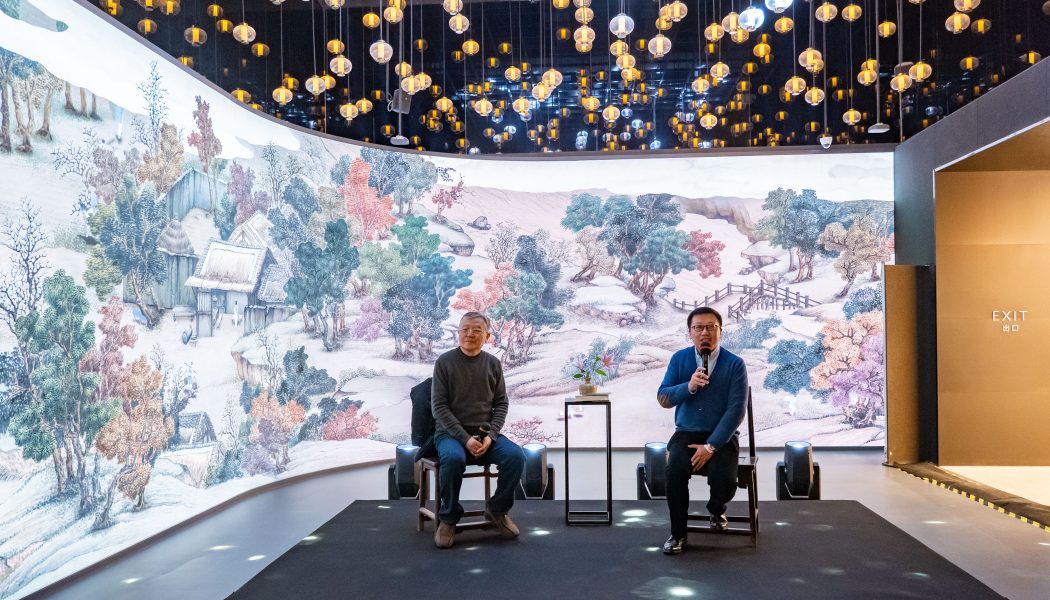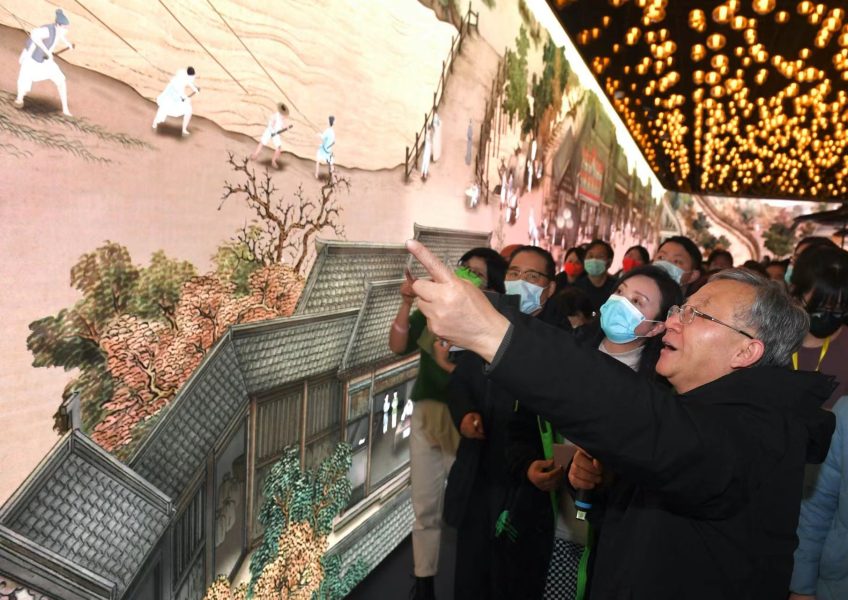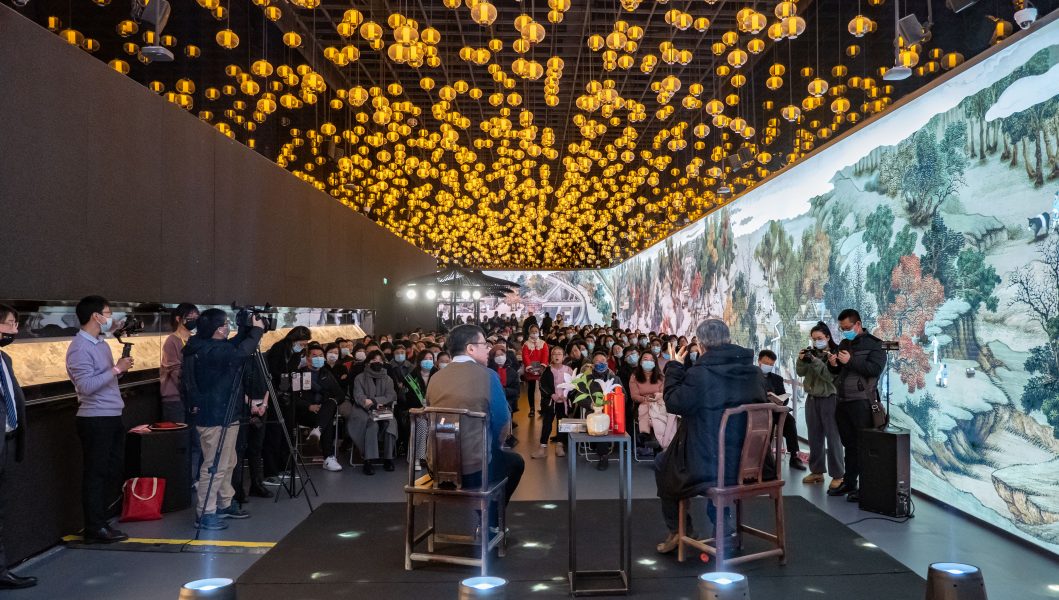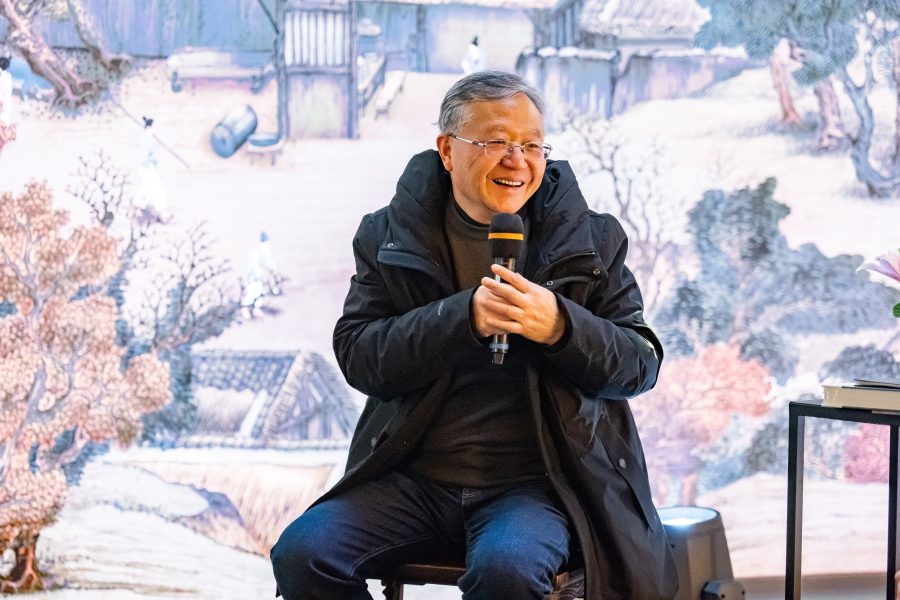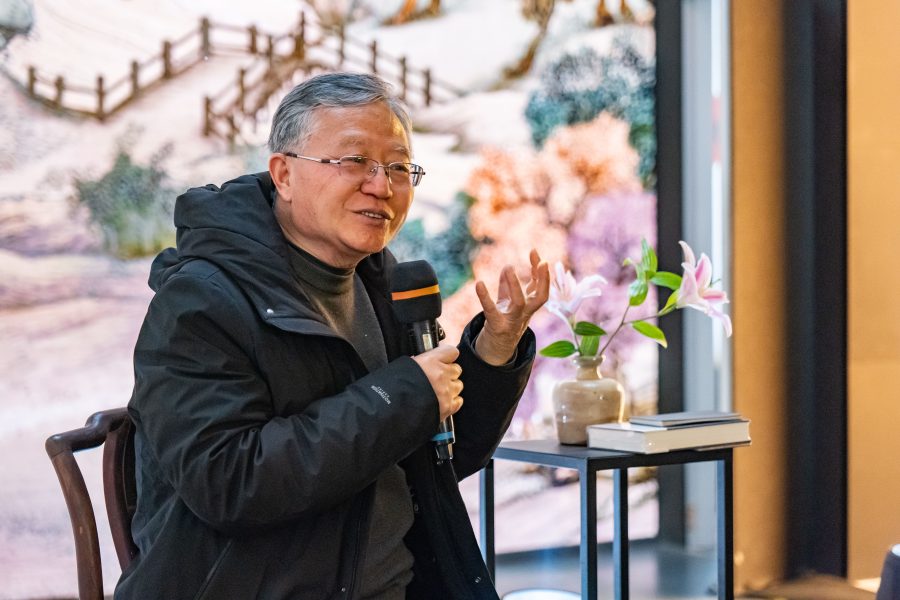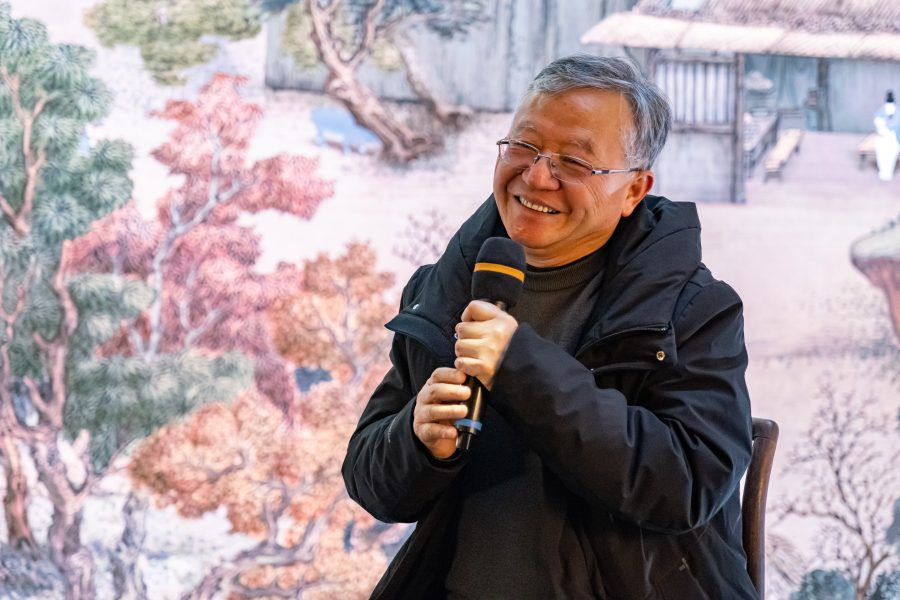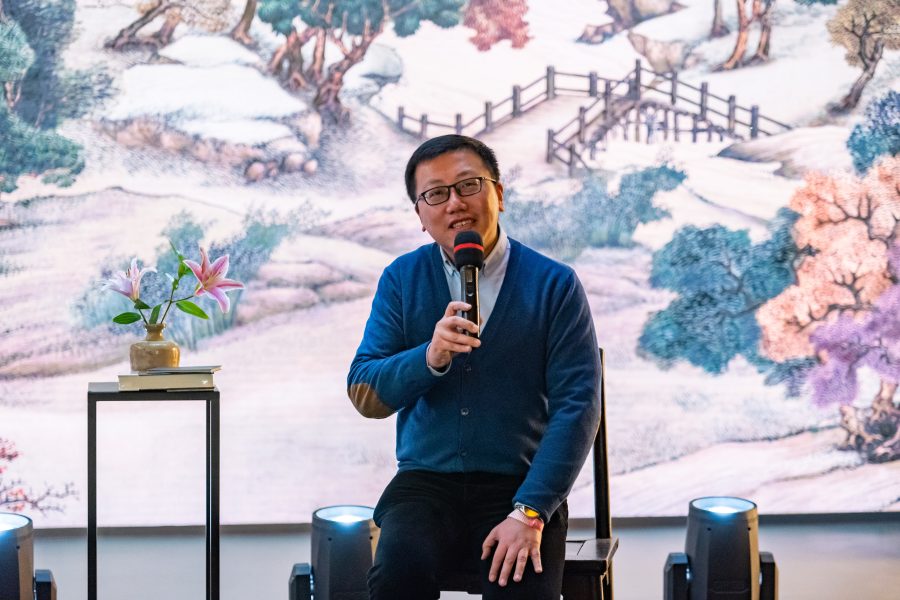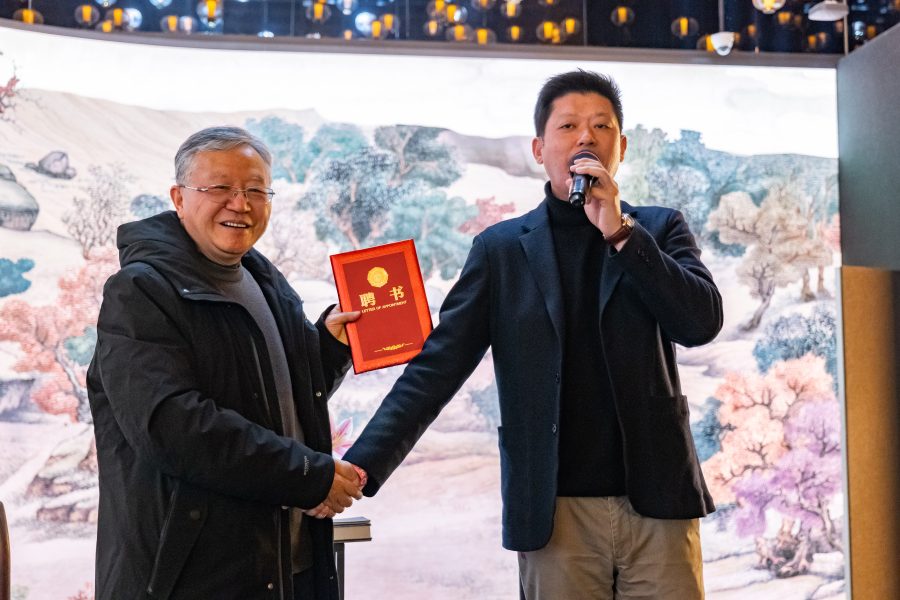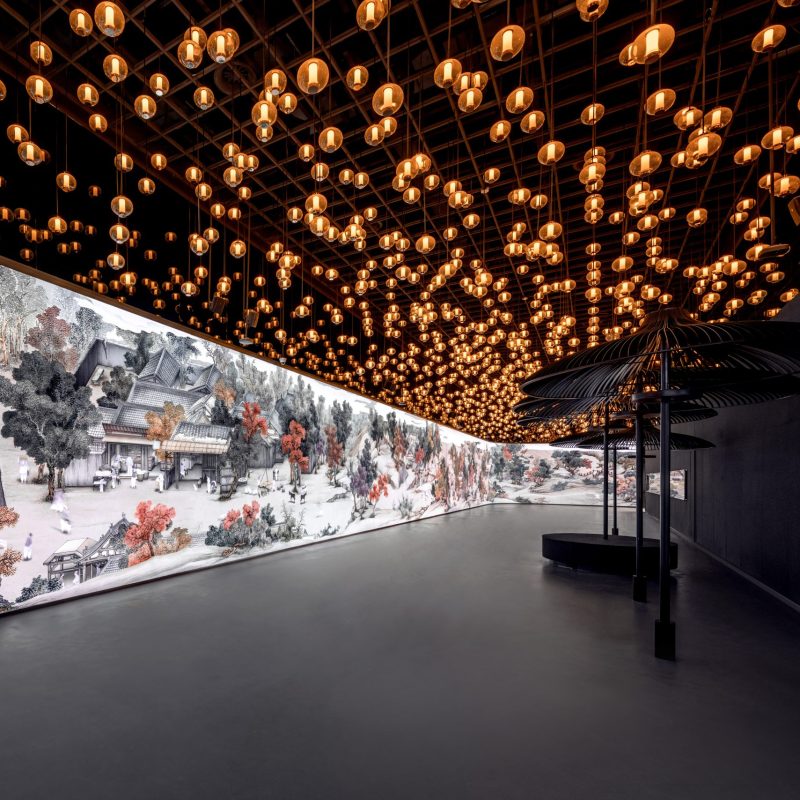Introduction
On February the 20th, 2022, the “Looking at the History of Nanjing City through the “Jinling Map”” lecture held by the Deji Art Museum successfully concluded. Renowned researcher of the history of Nanjing City, Professor Xue Bing, led participants to “travel back” to Nanjing a thousand years ago during the “An Era in Jinling:A Digital Art Exhibition,” allowing them to experience the vibrant urban life of this ancient city in a panoramic, multi-sensory, and multidimensional way.
Professor Xue Bing analyzed Nanjing’s rich cultural traditions and humanistic spirit with the audience, starting from the timeless scroll painting – the “Jinling Map,” bringing to life the flourishing mountains and rivers, notable figures, and the everyday life depicted in words in the “History of Nanjing City.” It can be said that the meeting, correspondence, harmony, and mutual growth of “Jinling Map” and “History of Nanjing City” are a perfect match. Looking at the “History of Nanjing City” through the “Jinling Map” is a revival of history, while viewing the “Jinling Map” through the “History of Nanjing City” represents the rebirth of the city.
This lecture attracted numerous media comments from outlets such as the “Xinhua Daily,” “Modern Evening News,” and “Yangzi Evening News,” stating that “the Jinling Map is Nanjing’s version of the Qingming Shanghe Map,” and “An Era in Jinling:A Digital Art Exhibition” is a groundbreaking exhibition.
The audience experienced the captivating details of the growth process of the city of Nanjing through Professor Xue Bing’s interpretation of the “Jinling Map.” This lecture, based in Nanjing, told the stories of the city and created a more vivid and three-dimensional representation of Nanjing. At the event, Lu Yuan, a professor from the Sociology Department of the School of Social and Behavioral Sciences at Nanjing University, served as the host and engaged in an exciting academic dialogue with Professor Xue Bing regarding the “Jinling Map” and its connection to Nanjing.
Guest Speaker
薛冰
著名学者、作家。
江苏省地方志学会常务理事、原江苏省作家协会专业作家。著有长篇小说《盛世华年》《饮水园》,书话集《旧书笔谭》《古稀集》,文化随笔集《家住六朝烟水间》《拈花意》《书事》《笺事》,专著《南京城市史》《格致南京》《秦淮河》等50余部。
在南京,在江苏,甚至整个江南,作家薛冰是公认的当之无愧的南京城市史文化代言人。他居南京六十余年,著作六十余部,一生孜孜不倦地书写南京文化、江南文化。
Academic Host
陆远
南京大学社会学院社会学系讲师
Academic Forum
主持人:
作为较早看到《金陵图》的观赏者,能不能请您谈谈与它的渊源?
薛冰:
当德基美术馆将这幅画带回南京的时候,馆方请我来研究这幅画所描绘的图景。当画卷拉开的时候,我们第一次看到了一千年前的南京是什么状况,这对于我们来说是非常震撼的。

清·冯宁《仿杨大章<宋院本金陵图>》
它还原了一个很真实的画面,应该是我们现在能看到的最早反映南京真实城市面貌的画面。我们过去在文献上的记载,在这幅《金陵图》上一一地被证实。我们常提到南京最早的老城南、长安里和门西的繁华,到底是怎样的繁华景象?在这幅画卷上,我们都可以看到。我感觉德基美术馆做了一件非常伟大的事情,让这张图回到南京,让我们南京人能了解到我们南京城,可以直观地看到它1000年前的面貌。
主持人:
薛老师说的特别好,我觉得博物馆把这幅图带回南京来,也是中国文化史上或者说在城市发展史上,一件非常了不起的事情。中国历史上,从唐宋以来就有很多非常著名的描绘市井繁华的长卷。但是基本上这些画,都不在它所描绘的城市。而我们今天作为南京人,有机会能够非常近距离地去感受。

主持人陆远老师在讲座现场
比如我们看到这瓮城,我们可以欣赏《金陵图》,然后品读薛老师的书,再走一走南京的中华门城墙,这是一个非常不一样的体验。刚才薛老师也说了,中国传统的历史上,有一个非常有中国特色的传统,其实我们不太注重对城市形象写实的描绘。
薛冰:
对,写实的描绘非常的少。

主持人:
明清时期的《金陵四十八景》,都是非常写意的画作。如此写实的画,是非常少见的。薛老师您能不能再举一两个例子,就这幅图让您印象特别深刻的地方?
薛冰:
我们讲中国的传统建筑有三个部分,最底下我们叫台基,中间是梁柱,最上是顶盖。在这张图里,画家有意识地将其揭开描绘。

《金陵图》中所绘的梁柱结构
比如说屋顶,我刚刚在展览里指给大家看的屋顶,还有梁柱,大家细看的时候就会发现,不同的梁柱结构也全部都是展开来的。按照画中的梁柱结构,可以把这个房子完整建起来。其中具体的情况,有土的,有砖的,有石头的,都可以看得很清楚。


